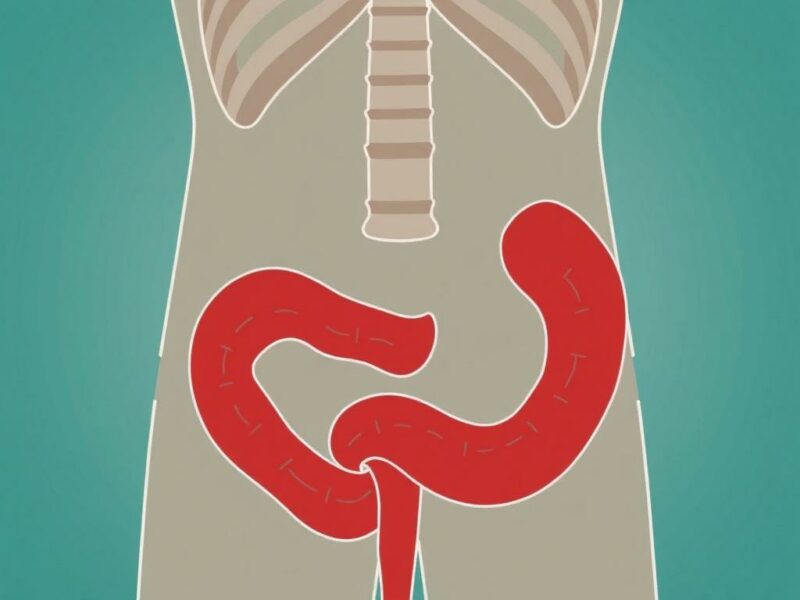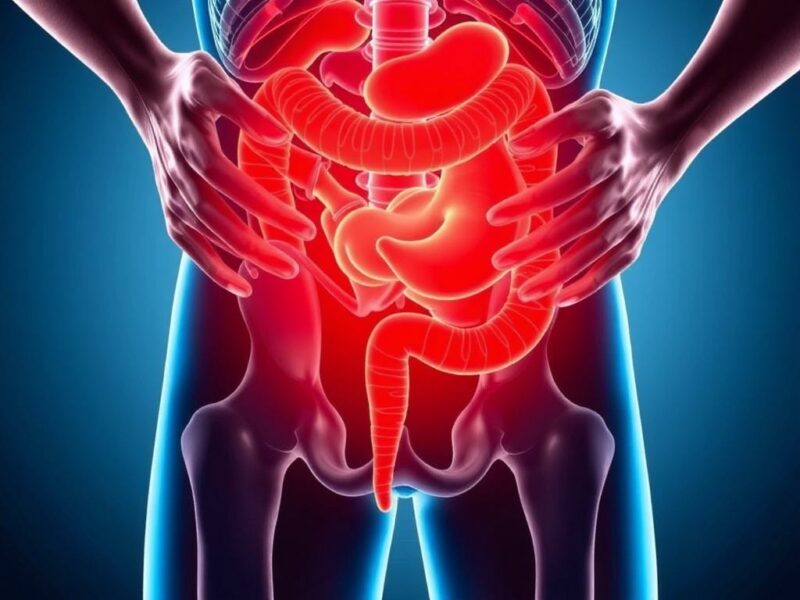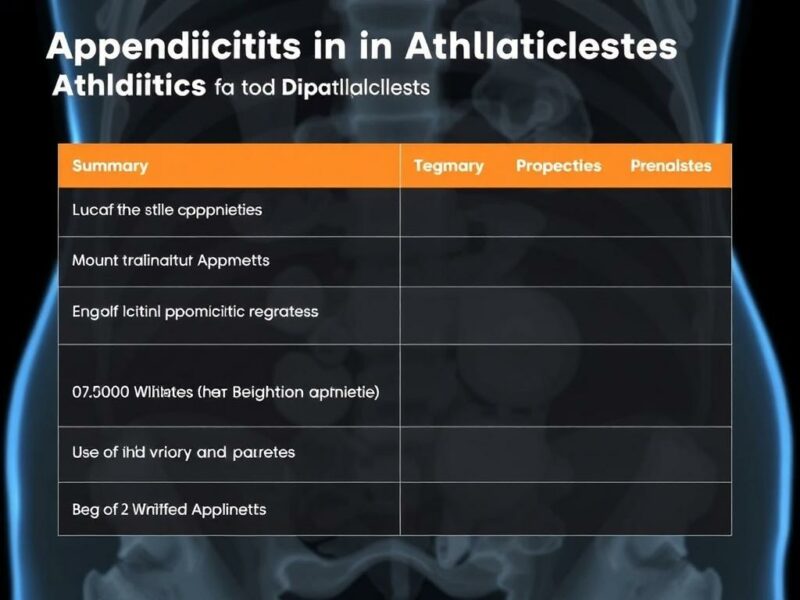Understanding Appendicitis: A Quick Overview
Appendicitis is a common but serious condition that occurs when the appendix becomes inflamed and infected. While this can affect anyone, athletes face unique challenges when dealing with appendicitis. The physical demands, intense training schedules, and sometimes limited access to medical care during competitions can complicate both diagnosis and recovery. But why is appendicitis particularly important for athletes to understand? Because recognizing the symptoms early and seeking prompt treatment can mean the difference between a quick recovery and prolonged downtime from sports or even surgery complications.
The appendix, a small, tube-shaped sac attached to the large intestine, may seem like a minor part of the body, but when it becomes inflamed, it can cause severe pain and health risks if left untreated. Appendicitis typically presents with sudden sharp pain on the lower right side of the abdomen, nausea, vomiting, and a fever. For athletes, however, these symptoms can sometimes be confused with muscle strains, dehydration, or other sport-related ailments. That’s why both athletes and their coaches need to be aware of the signs, perform careful assessments, and act quickly.
Why Appendicitis in Athletes Can Be Tricky to Diagnose
One of the biggest challenges with appendicitis in athletes is that the symptoms may overlap with injuries or conditions common in sports. For example, an abdominal strain or a hernia might cause similar localized pain. Also, intense exercise can sometimes mask the discomfort or delay symptom awareness, influencing when treatment is sought. This delay can increase the risk of complications like a ruptured appendix, which can lead to dangerous infections.
Doctors often rely on a combination of physical examinations, blood tests, and imaging studies to diagnose appendicitis. However, in the case of athletes, these exams may require a deeper discussion about recent physical activity, injuries, and dietary habits because such factors might influence symptoms. For example, dehydration or electrolyte imbalance might cause digestive symptoms mimicking appendicitis. Early diagnosis is vital, as timely surgical treatment—often laparoscopic appendectomy—leads to faster recovery and minimizes the interruption to the athlete’s training.
Common Symptoms of Appendicitis in Athletes
- Sudden abdominal pain near the navel that later shifts to the lower right side
- Nausea and vomiting
- Loss of appetite
- Fever and chills
- Abdominal swelling or tenderness
- Difficulty performing certain movements without pain
- Increased pain during physical activity
Because athletes train their bodies to endure discomfort, they might underreport or ignore these symptoms initially. This makes education and awareness crucial among teammates and medical personnel.
Diagnosis Techniques and Tools for Appendicitis in Athletes
Proper diagnosis starts with clinical evaluation but often involves several diagnostic tools. Here’s a closer look at how doctors determine whether an athlete has appendicitis:
| Diagnostic Tool | Purpose | Relevance for Athletes |
|---|---|---|
| Physical Examination | Assess tenderness, rebound pain, and abdominal rigidity | Helps differentiate appendicitis from muscle strain |
| Blood Tests | Check for elevated white blood cells indicating infection | Confirms presence of inflammation |
| Ultrasound | Imaging to visualize the appendix | Non-invasive, useful for younger athletes and those in early stages |
| CT Scan | Detailed cross-sectional images to confirm diagnosis | Most accurate, especially in complicated or unclear cases |
Athletes undergoing diagnosis may sometimes need to suspend training to allow medical professionals to conduct thorough tests. This period can cause anxiety over lost conditioning, but early detection outweighs any temporary setbacks.
Treatment Options: Surgery and Beyond
Once diagnosed, appendicitis typically requires urgent surgical intervention to remove the infected appendix. The most common procedure is laparoscopic appendectomy, a minimally invasive surgery with small incisions and quicker recovery compared to open surgery. For athletes, this is ideal because it reduces scarring, pain, and time away from training.
Sometimes, if appendicitis is caught very early or in a less severe form, doctors may recommend a course of antibiotics first. This approach is less common and usually reserved for specific cases where surgery carries greater risk. However, surgical removal remains the gold standard because it eliminates the chance of the appendix rupturing later.
Post-surgery recovery depends on the athlete’s general health, the severity of the inflammation, and the type of surgery performed. Typically, athletes can expect to resume light activities within one to two weeks, with complete return to intense training after four to six weeks following laparoscopic surgery.
Postoperative Care and Recovery Tips for Athletes
- Follow all medical advice, including medication and wound care
- Avoid lifting heavy weights or intense abdominal workouts until cleared
- Gradually increase physical activity based on pain tolerance and doctor’s guidance
- Maintain hydration and nutritious diet to support healing
- Communicate any unusual symptoms promptly to healthcare providers
Remember, rushing back too soon can lead to complications such as wound infection or hernias. Balance patience with progressive activity to regain full strength safely.
Common Misconceptions About Appendicitis in Athletes

There are several myths surrounding appendicitis that athletes should be cautious about. For instance, some believe that appendicitis “comes and goes” or that self-medicating with painkillers will resolve the issue. This is dangerous, as delaying proper treatment increases risks of rupturing the appendix, which can cause life-threatening infections.
Another misconception is that only sedentary or older people get appendicitis. Athletes are equally vulnerable, regardless of fitness level. In fact, vigorous exercise doesn’t protect against appendicitis and might complicate symptom detection. Coaches and trainers should encourage athletes to report abdominal pain honestly rather than trying to power through it.
Preventive Measures and When to Seek Help
Unfortunately, there is no guaranteed way to prevent appendicitis, as the exact cause often involves blockage or infection of the appendix. However, maintaining a healthy diet rich in fiber and staying well-hydrated might support overall digestive health.
For athletes, prompt attention to symptoms is the best preventive measure against serious complications. If an athlete experiences persistent or severe abdominal pain, especially accompanied by nausea, vomiting, or fever, seeking immediate medical evaluation is crucial.
When to Get Medical Help
- Sudden, sharp abdominal pain lasting more than a few hours
- Pain localized to the lower right abdomen
- Persistent nausea or vomiting
- Fever higher than 38°C (100.4°F)
- Inability to tolerate food or fluids
Encouraging this awareness can prevent delays that worsen outcomes for athletes.
Impact of Appendicitis on Athletic Performance

Beyond the immediate health risks, appendicitis can significantly disrupt an athlete’s performance trajectory. Time away from practice and competitions may set back skill development, muscle conditioning, and team dynamics. Psychological effects, such as frustration or anxiety about losing fitness, also commonly occur.
Understanding the typical recovery timeline and having structured plans to return to training can help athletes stay motivated. It’s vital for coaches and medical staff to collaborate on individualized rehabilitation plans that balance physical readiness with competitive goals.
Example Recovery Timeline Post-Appendectomy
| Time After Surgery | Expected Activity Level | Notes |
|---|---|---|
| Days 1-7 | Rest, light walking | Focus on wound healing, pain management |
| Weeks 2-3 | Light aerobic activities, stretching | Avoid heavy lifting or contact sports |
| Weeks 4-6 | Gradual return to training | Monitor for pain or fatigue, increase workload carefully |
| After 6 weeks | Full return to competitive sports | Ensure medical clearance before resuming intense activities |
Such timelines can vary, so personalizing recovery is essential.
Psycho-Social Considerations for Athletes with Appendicitis
While physical recovery is important, it’s also crucial not to overlook the emotional and mental health aspects. Athletes accustomed to rigorous activity may feel isolated or demotivated during their forced break. They may worry about losing their spot on the team or falling behind peers.
Support from coaches, teammates, and medical staff through encouragement and mental health resources can improve coping and adherence to recovery. Goal-setting, visualization techniques, and maintaining social connections with the team can help athletes stay connected and motivated throughout the process.
Summary Table: Key Points for Athletes Facing Appendicitis

| Aspect | Advice | Reasoning |
|---|---|---|
| Recognize Symptoms | Report any abdominal pain promptly | Early diagnosis prevents complications |
| Seek Medical Evaluation | Don’t self-diagnose or delay visit | Avoid rupture and infections |
| Treatment | Follow surgical or antibiotic plan strictly | Ensure complete healing |
| Recovery | Gradual return to training as advised | Prevent re-injury and maximize performance |
| Mental Health | Seek support, stay connected with team | Maintain motivation and resilience |
Conclusion
Appendicitis in athletes is a condition that demands careful attention and swift action. Recognizing the symptoms early and differentiating them from sports-related injuries can make all the difference in treatment success and recovery time. While surgery and rest may put an athlete temporarily out of commission, proper care ensures a full return to peak performance levels. Awareness, prompt medical evaluation, and gradual rehabilitation are key to minimizing the impact of appendicitis on athletic careers. Remember, your health should always come first—listening to your body and seeking help cannot be overstated when it comes to appendicitis.



